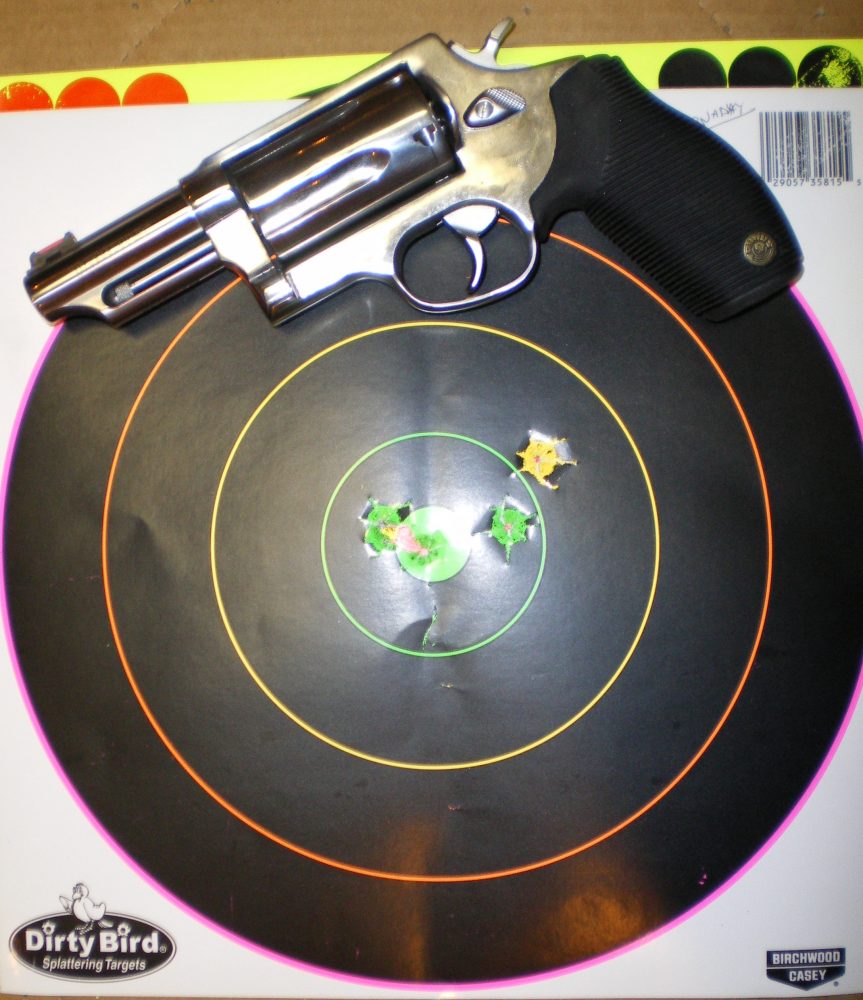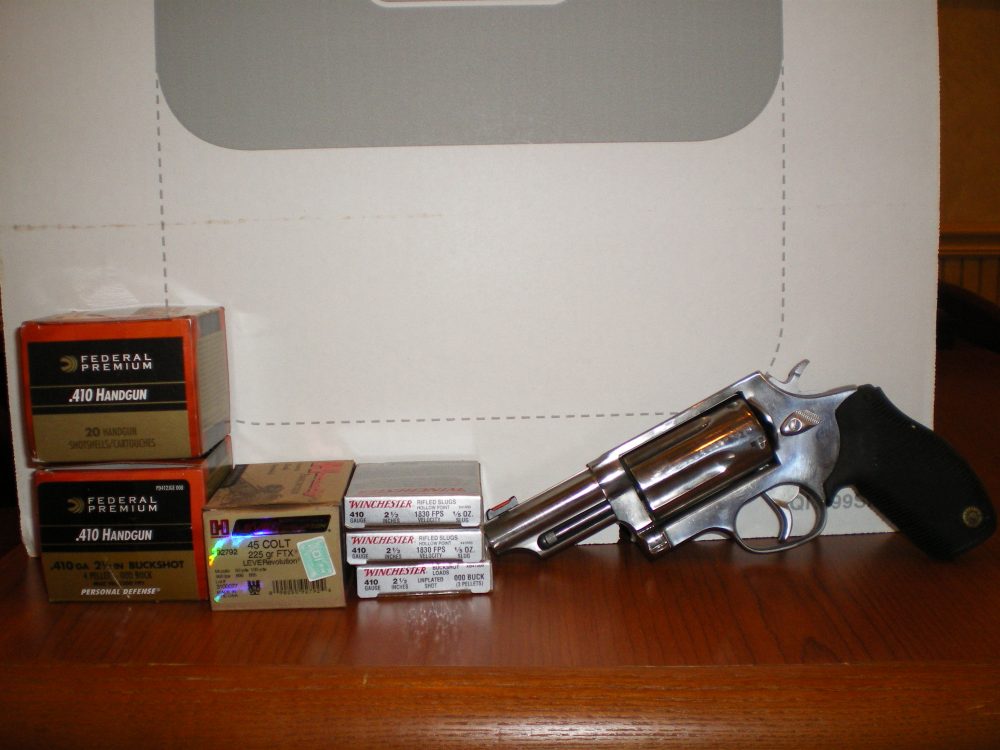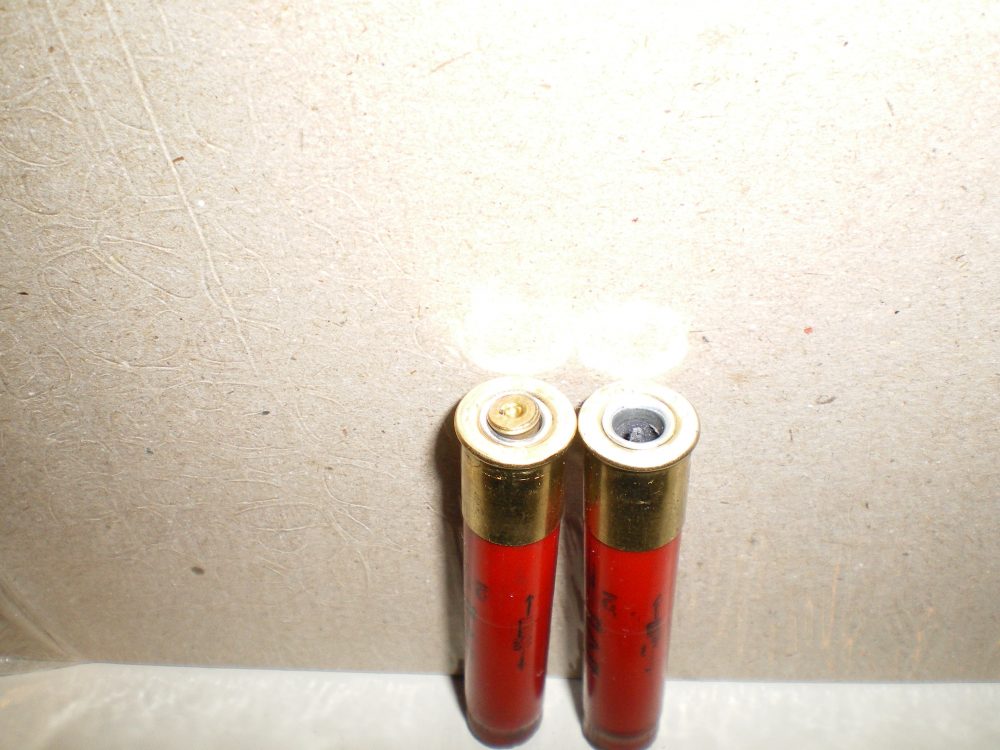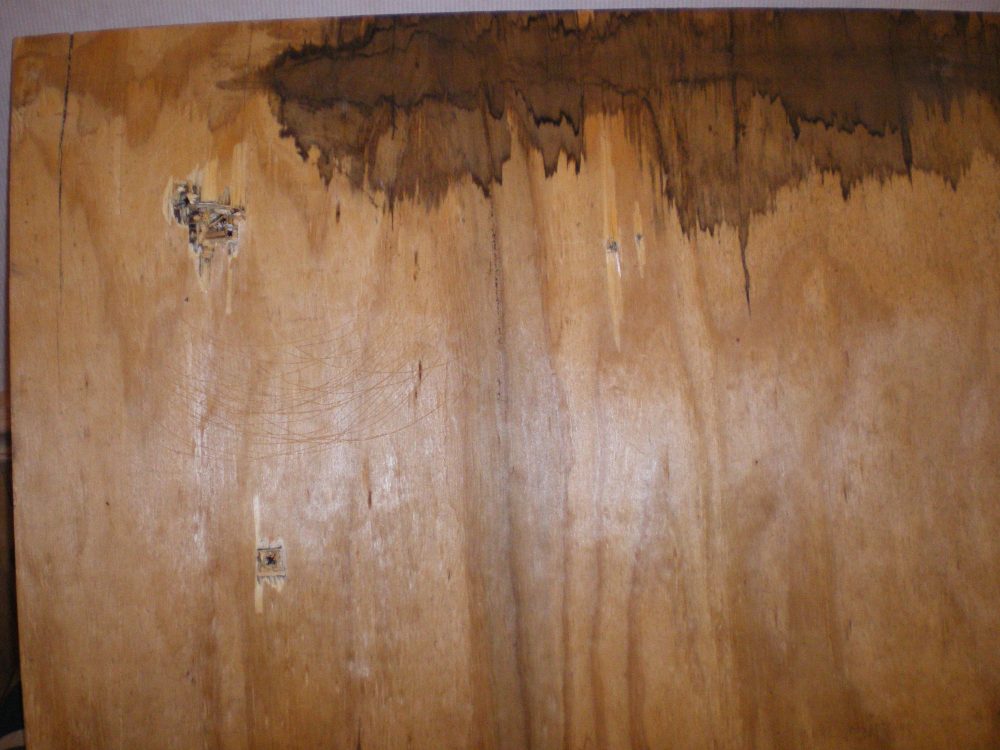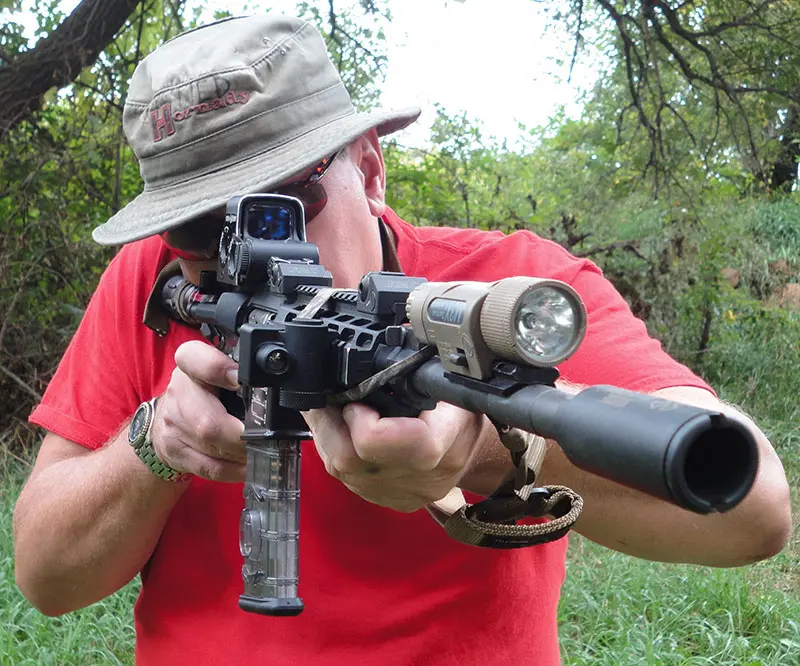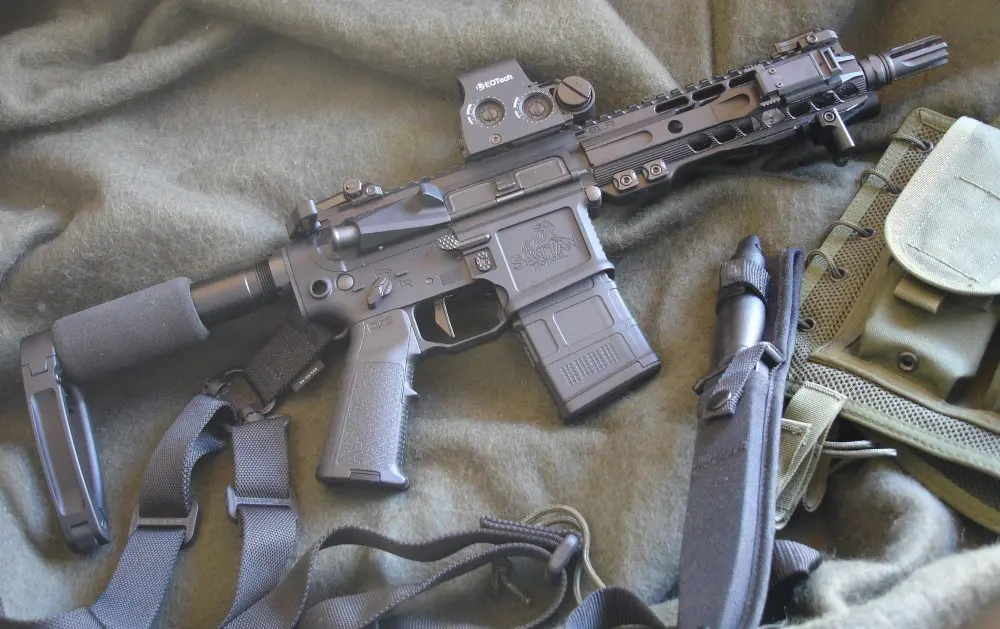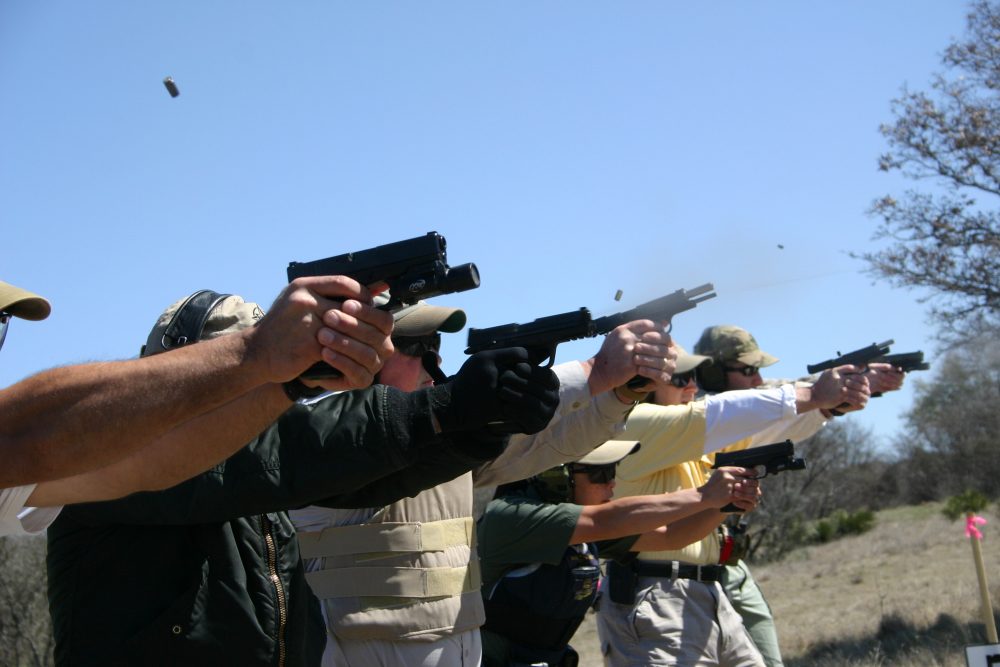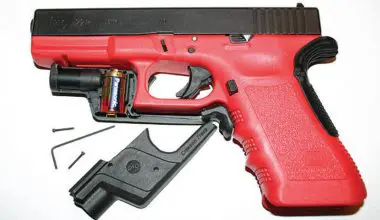Reviewing Taurus Judge Revolver and Judge Ammo
Taurus Judge was tested with birdshot, buckshot, .410 slugs and .45 Colt ammunition.
The Taurus Judge is a revolver intended to be capable of firing both .410 shotgun shells and .45 Colt pistol cartridges. They seem to be wildly popular, and gun shops have a hard time keeping them in stock. They also appear frequently in glowing reviews in the general gun magazines and on the various shooting shows on outdoor-oriented TV channels.
After a number of people came to my range, Rangemaster in Memphis, with them over a fairly short period of time, I decided to see for myself what all the excitement was about.
Best group fired with Hornady .45 Colt ammo at seven yards. This is not terribly good accuracy from a full-size handgun.
I am leery of test guns supplied by the manufacturer, so I ordered a Taurus Judge Revolver through our Pro Shop’s normal distribution channels, acquiring a stainless steel version with a three-inch barrel. Initial inspection showed the fit and finish to be pretty good, with a notch rear sight, red fiber optic front sight and comfortable rubber grips supplied on the gun. The barrel is rifled, which keeps the Judge from being an “Any Other Weapon” under federal NFA regulations. After examining the gun and dry firing it a few times, it was off to the range for testing with a variety of available loadings.
I have seen quite a few ads and Internet postings touting the use of birdshot in the Judge for close-range personal defense against human attackers or snakes and similar critters. Given the short barrel and the presence of rifling, I certainly had my doubts—and testing quickly confirmed them.
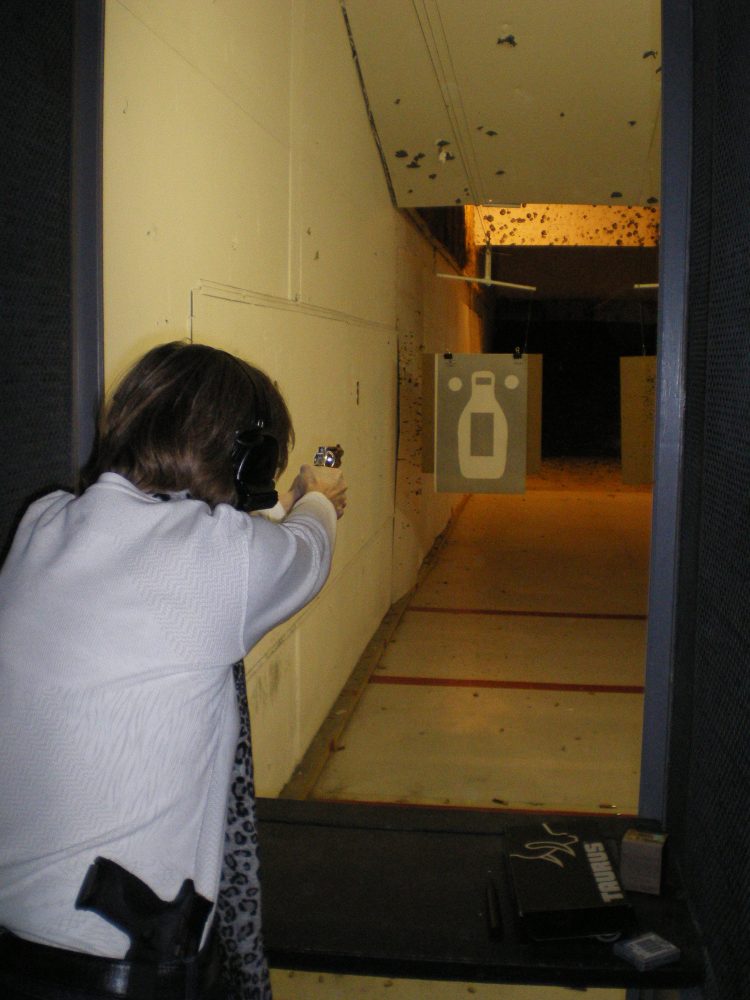
The first birdshot load tried was #9, very small birdshot. The idea was to maximize the number of pellets available in a 2 1/2″ .410 shell. The first shot at 15 feet produced a pattern 30 inches in diameter. No, that’s not a typo—thirty inches. There was a hole in the center of the pattern big enough to miss a fair-sized snake at that distance, probably caused by the shot charge being swirled around in the barrel by the rifling.
A composite pattern from three shots made a pattern I feel confident would kill a snake, but the cardboard IDPA target I was using as a backer was hit by pellets from top to bottom, although the range was only 15 feet. Obviously, you would not want to shoot this load with a person or a pet anywhere near the intended target!
Out of curiosity, I fired a #9 load at a one-liter plastic water bottle at 15 feet. Only a few pellets hit it, some of them bounced off, and none of them perforated the bottle. So much for anti-personnel use…
Federal makes two loads specifically for the Judge, calling them .410 Handgun ammunition. One has 7/16th of an ounce of #4 birdshot, which is considerably larger and heavier than the #9 shot tried previously. Patterns were tighter but still unimpressive. I tried a round against a piece of ¾-inch plywood at ten feet, and none of the pellets penetrated through the wood. At this point, I wrote off further testing with birdshot and switched to slugs.
Hoping for better performance, I broke out some Winchester rifled slugs. The hollow-based Forster-type slugs weigh about 90 grains, in the same class as .380 Auto bullets, and are in the same velocity range from the Judge’s short barrel.
Backed-out primer, left, and blown primer, right. Backed-out primers were encountered several times during test firing.
On the first shot with these slugs, the primer backed out of the shell, locking against the recoil shield and preventing further rotation of the cylinder. Once I got that round out, I tried again. Same result. On the third try, the primer blew clean out of the shell and was not found. The accompanying photo shows one of the fired shells with a backed-out primer and the one that blew out. Throughout the rest of testing with slugs, we continued to encounter these backed-out primers. When that happens, the cylinder becomes very difficult to rotate. Not a good thing in a defensive revolver.
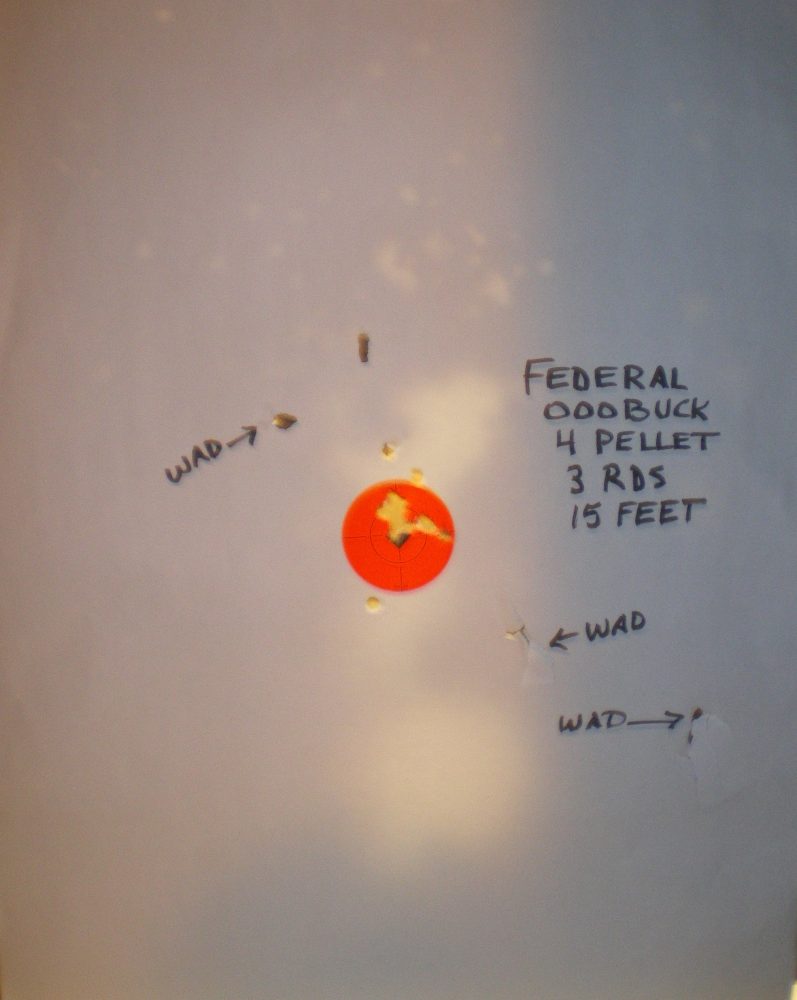
Still looking for something that works well in this gun, I switched to the other new Federal load, which contains four pellets of 000 Buck. Other manufacturers offer loads with three pellets of 000 Buck, but the new Federal load features four pellets, and they are hardened and copper plated. Finally, something that works!
At 15 feet, patterns with this load were about 3 to 4 inches in diameter, concentric, and right on the sights. At seven yards, patterns could still be covered by my hand, with the fingers spread. However, beyond seven yards, the patterns opened considerably. At 15 yards, the pellets would not stay on a standard FBI Q-target silhouette. That worries me.
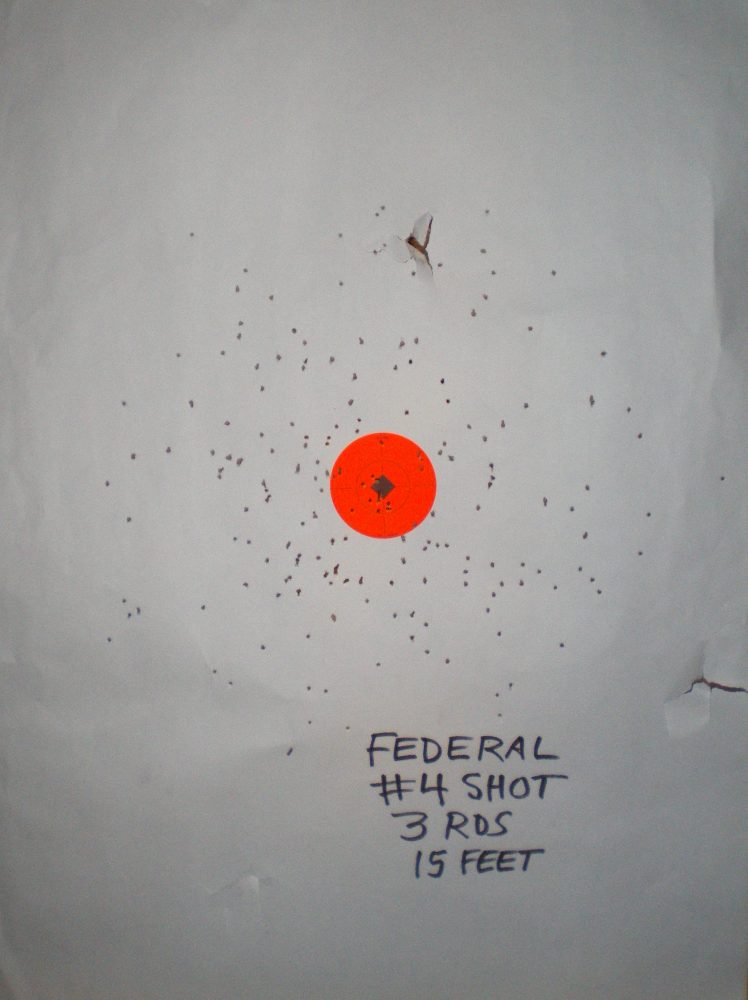
A couple of months ago, one of my students was involved in a shooting. Two men were robbing her husband in the front yard and shot him in the leg. Our brave lady opened a second-floor window and engaged the bad guys, hitting one of them and causing both to run off. The injured one was arrested at the hospital a couple of hours later. Had she been using a Judge with buckshot, she might well have hit her husband as well as the robber. Bad.
I tried the Federal 000 load on the 3/4″ plywood at ten feet and it sailed right through. We also tried the Winchester three-pellet 000 Buck load. Patterns were a bit larger than with the hardened, plated shot in the Federal load.
If your circumstances guarantee engagements within seven yards, I guess these loads would work fine. My crystal ball is down for repairs right now, so I think I will stick with something with a bit more useful range.
With that in mind, I decided to try .45 Colt ammo in the Judge. The cylinder is quite long, so the .45 bullet has to travel a good bit before hitting the rifled barrel. I was afraid this long bullet jump would result in poor accuracy, and I was right. I tried the traditional 255-gr. lead flat point load and Hornady’s new 225-gr. FTX load, designed for use in lever-action rifles. Neither load shot well. At seven yards, groups hovered at the 2 ½- to 3-inch mark—an accuracy level I expect at 25 yards from a defensive handgun. Both loads did hit pretty close to the sights at seven yards.
000B exited ¾-inch plywood, as did the slug. No birdshot exited.
Recoil from the Judge with shotgun ammo was surprisingly heavy. I am not recoil sensitive, but some other shooters who tried the gun had a lot of muzzle flip, which slowed shot-to-shot recovery. With .45 Colt ammo, recoil was mild, which I expected from a 38-ounce handgun. My wife tried the gun and found the double-action trigger reach to be too long for comfort. The five-shot .410 cylinder weighs a lot, and it takes a fairly robust trigger pull to rotate it.
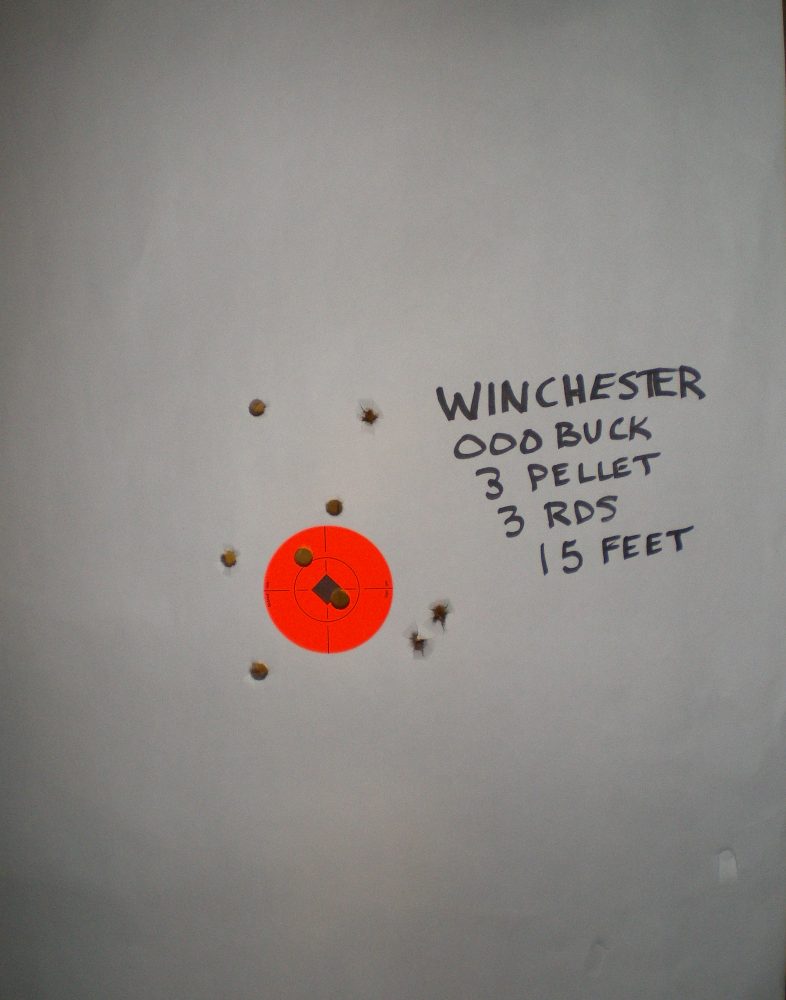
I weighed the Judge loaded with five rounds of the Federal 000 Buck load. My postal scale said it weighs 38.4 ounces so loaded. Out of curiosity, I did the same with a customized 1917 Smith & Wesson .45 revolver with 4″ barrel, loaded with .45 Auto ammo. It weighed 38.6 ounces—almost identical to the Judge in weight. If your plan is to use .45 pistol ammo, the S&W will do a far better job.
The verdict? I can’t find anything the Judge does well that a standard handgun won’t do better. At room ranges—five to seven yards—the buckshot pattern is so small that it must be aimed precisely, just like a handgun bullet, so there is no advantage there. Beyond that distance, danger to bystanders is simply too great to even consider using the gun. With birdshot, the Judge is essentially useless. With .45 ammo, it is a large, ungainly piece with poor accuracy.
I’ll pass.
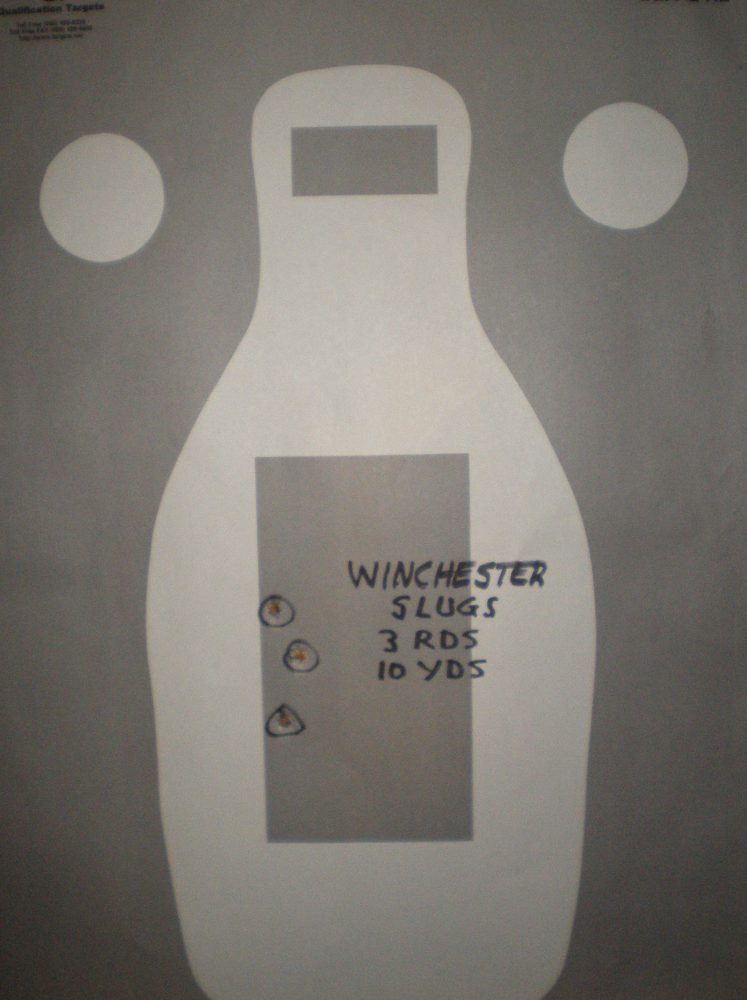
[Tom Givens has been the owner and chief instructor at Rangemaster, a full-time firearms school in Memphis, TN, since 1996. Rangemaster has trained over 30,000 students at the home range and all over the United States in both defensive handgun and shotgun courses. Givens is certified as a firearms instructor by the NRA, the FBI and the state of Tennessee. He often works as an expert witness in state and federal courts in cases involving firearms and firearms training. He can be contacted at www.rangemaster.com.]
SOURCES:
Taurus
Dept. S.W.A.T.
16175 NW 49 Avenue
Miami, FL 33014
(800) 327-3776
www.taurususa.com
Federal Cartridge Company
Dept. S.W.A.T.
900 Ehlen Drive
Anoka, MN 55303-7503
(800) 322-2342
www.federalcartridge.com
Hornady Mfg. Co.
Dept. S.W.A.T.
Box 1848
Grand Island, NE 68802-1848
(800) 338-3220
www.hornady.com
Rangemaster
Dept. S.W.A.T.
2611 S. Mendenhall Rd.
Memphis, TN 38115
(901) 370-5600
www.rangemaster.com
Winchester Ammunition
Dept. S.W.A.T.
427 N. Shamrock St.
East Alton, IL 62024
(615) 258-3340
www.winchester.com
